Apr 30, 2017 | coins, foreign, fun

A glance into my booth at DC Big Flea
One thing I like about this business is the variety of items that you can find. Aside from the various antiques and collectibles, there are a lot of interesting numismatic items that you may not find at a coin dealer’s table at almost any show. Most of these are not high priced items but are very interesting. For example, while Love Tokens can bring a nice premium, only a few specialized dealers would carry them. Since most of the dealers are also pickers. They will buy all of this stuff and bring it to a show like this.
A couple of smamples that I missed taking pictures of includes someone who had a coffee cup full of buffalo nickels for 25-cents a coin. After searching through most of the coins, all of them had at least a partial date. Not a dateless coin to be found. Another dealer was selling circulated Morgan dollars in VG-to-XF condition for $20 a coin, which is pretty good since the catalog value of most of these coins are $25-45 each. Current melt value of Morgan dollars is a little more than $14.
Although I do not have coins in my inventory at this show, you could have come by and bought a Red Book from one of the contributors, cheap!
Here are the pictures uploaded directly from my iPhone:
-
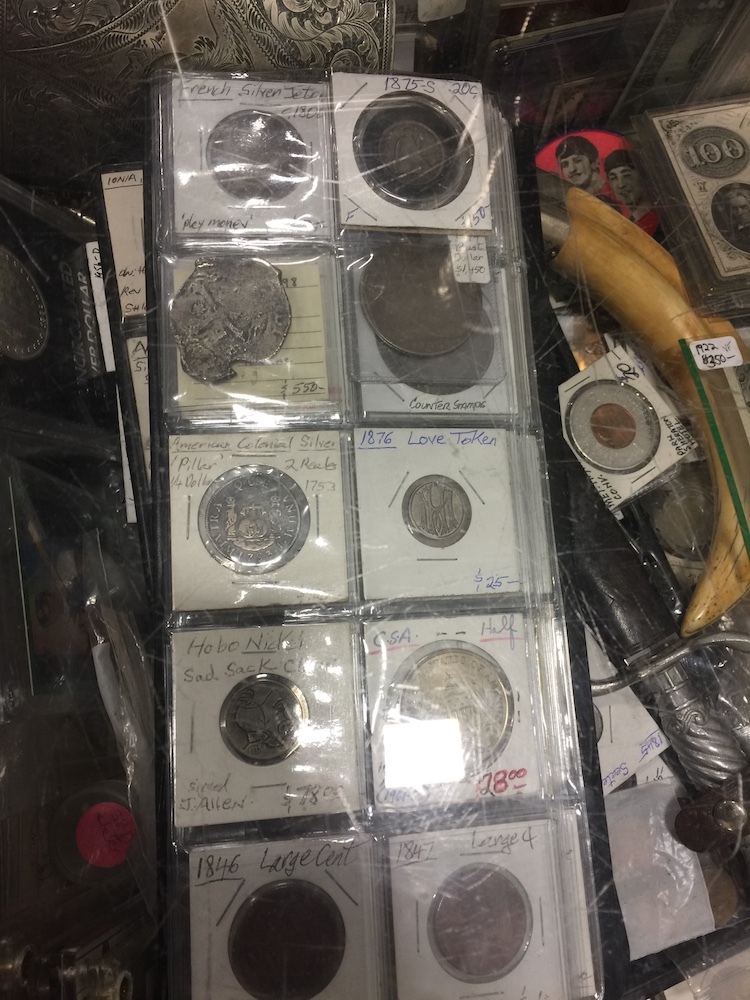
-
Page of odds and ends including a hammered coin, love token, and Hobo Nickel
-

-
A $100 Confederate States of America note
-
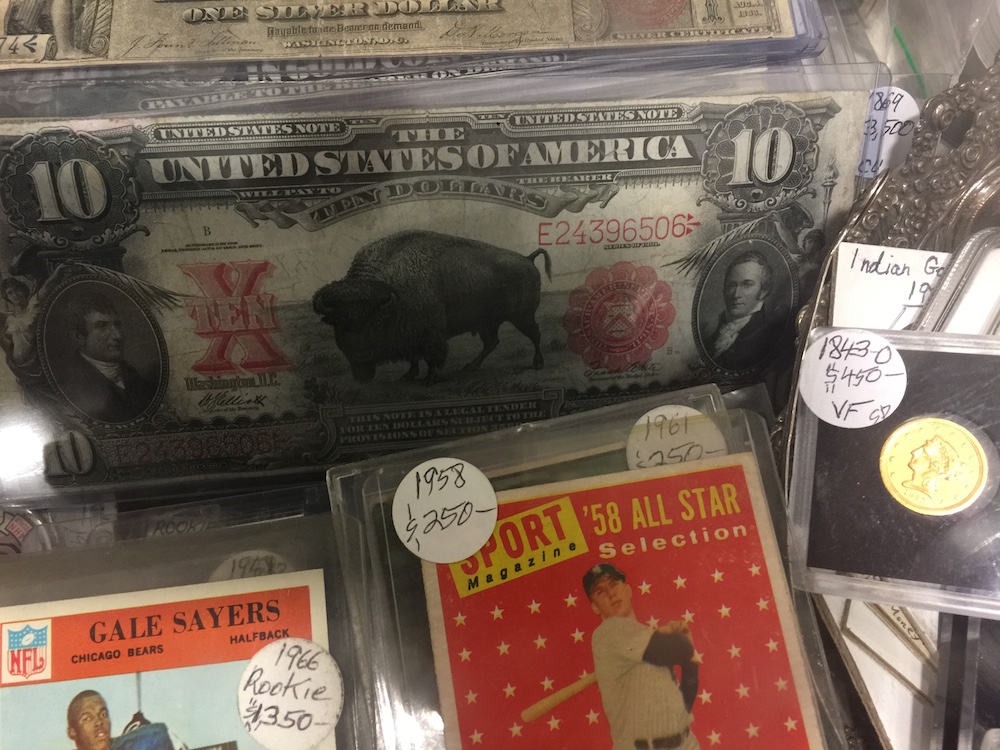
-
1901 $10 Dollar Lewis and Clark Bison note (Fr# 122), Elliot-White
-

-
A small selection of Love Tokens
-
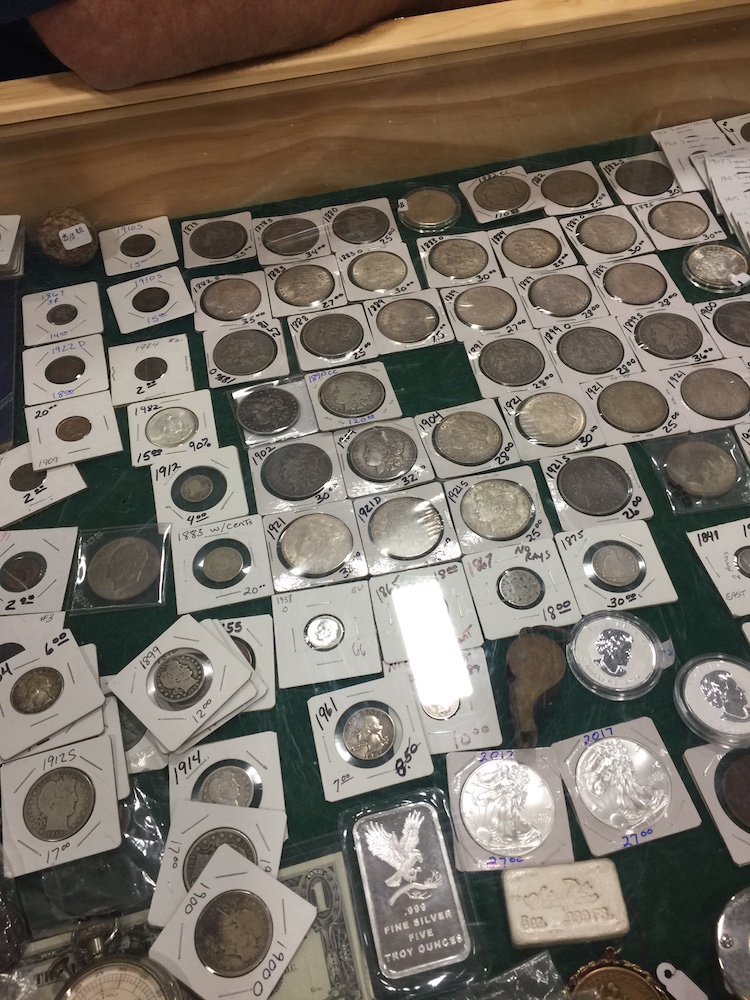
-
Lots of silver dollars and many at very good prices
-
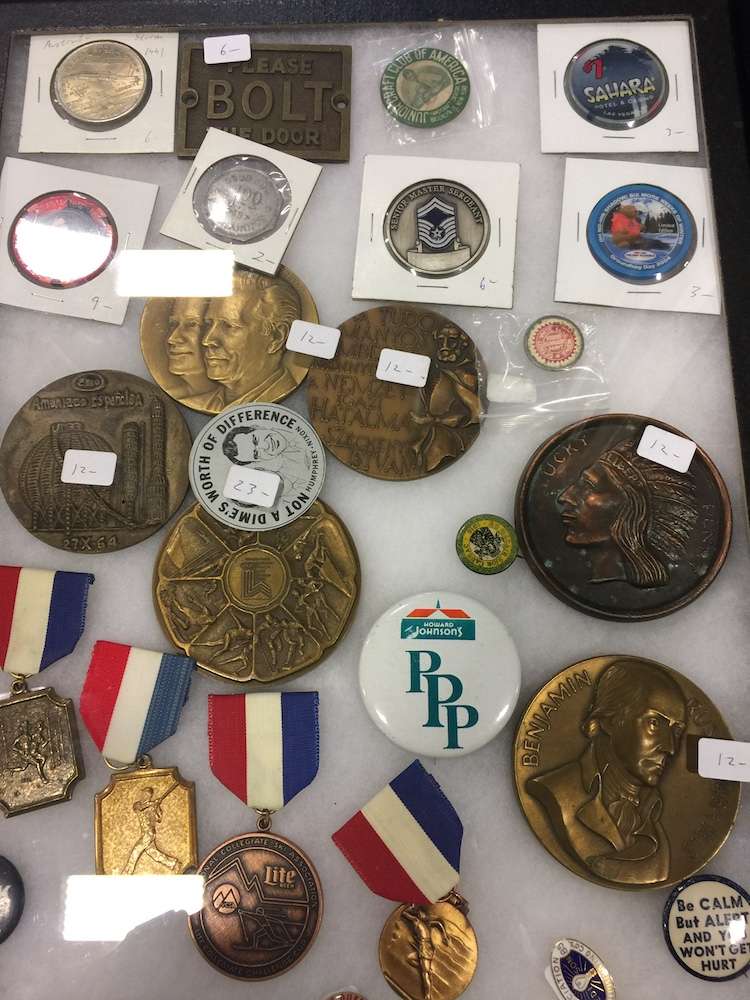
-
Medals, awards, casino chips, and a Challenge Coin
-

-
Casino chips and challenge coins make for an interesting display option!
-

-
Some decent Buffalo Nickels, although some of these prices are a little high for their condition
-
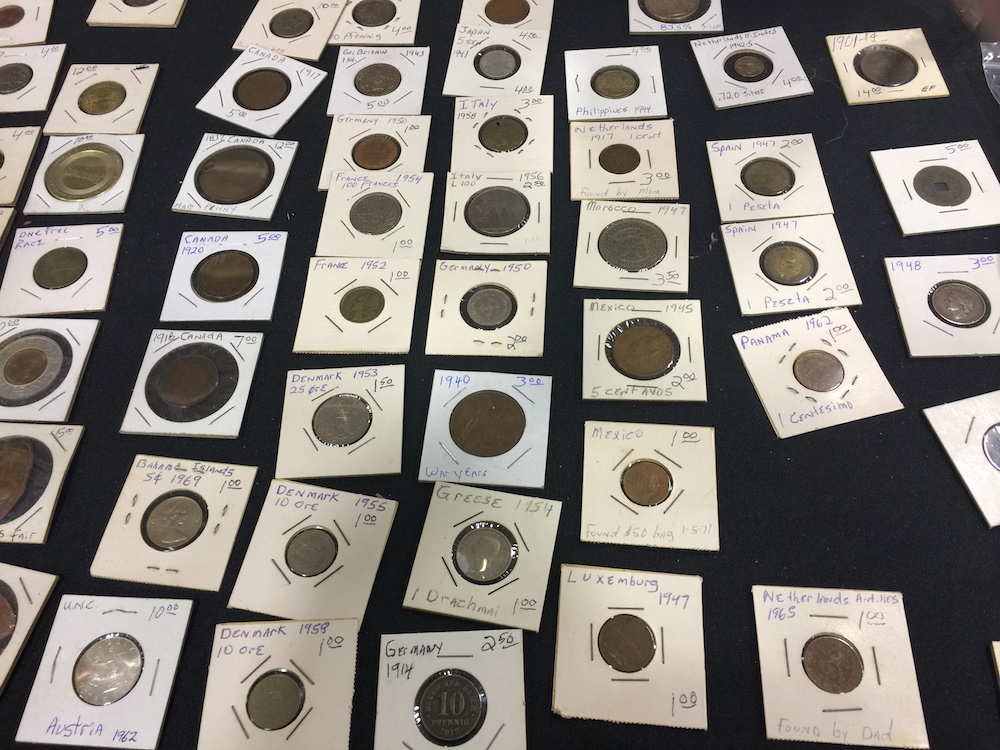
-
A layout of foreign coins. I bought the 1920 Canada Large Cent to the left
-
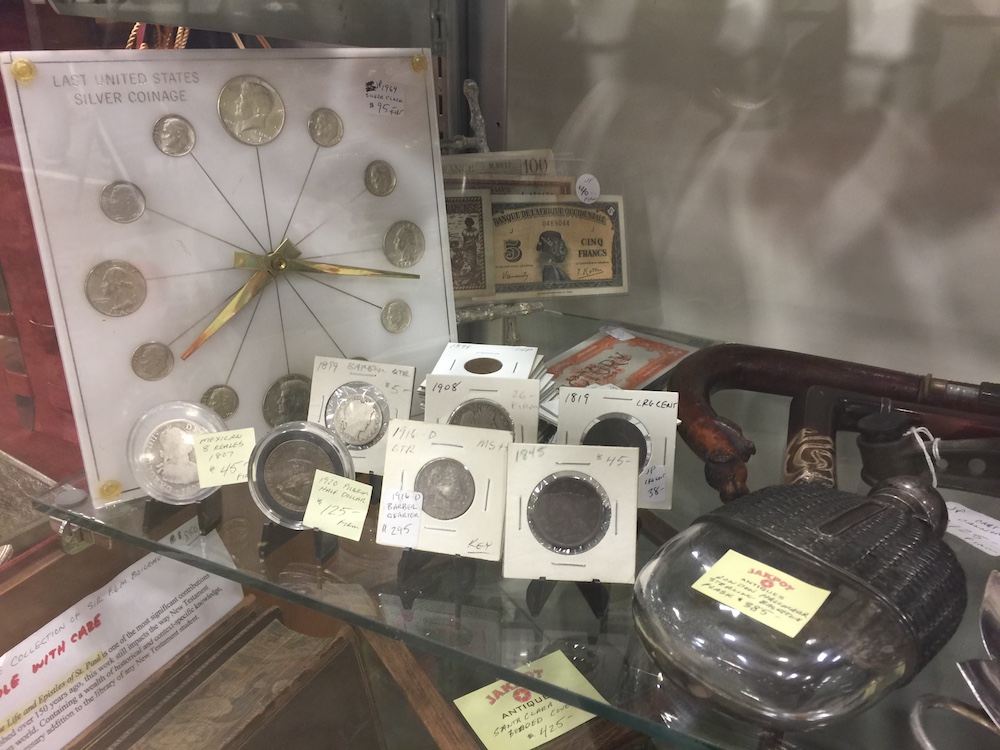
-
The clock on the left is an old Capital Plastics holder. It is the first time I have seen one.
-
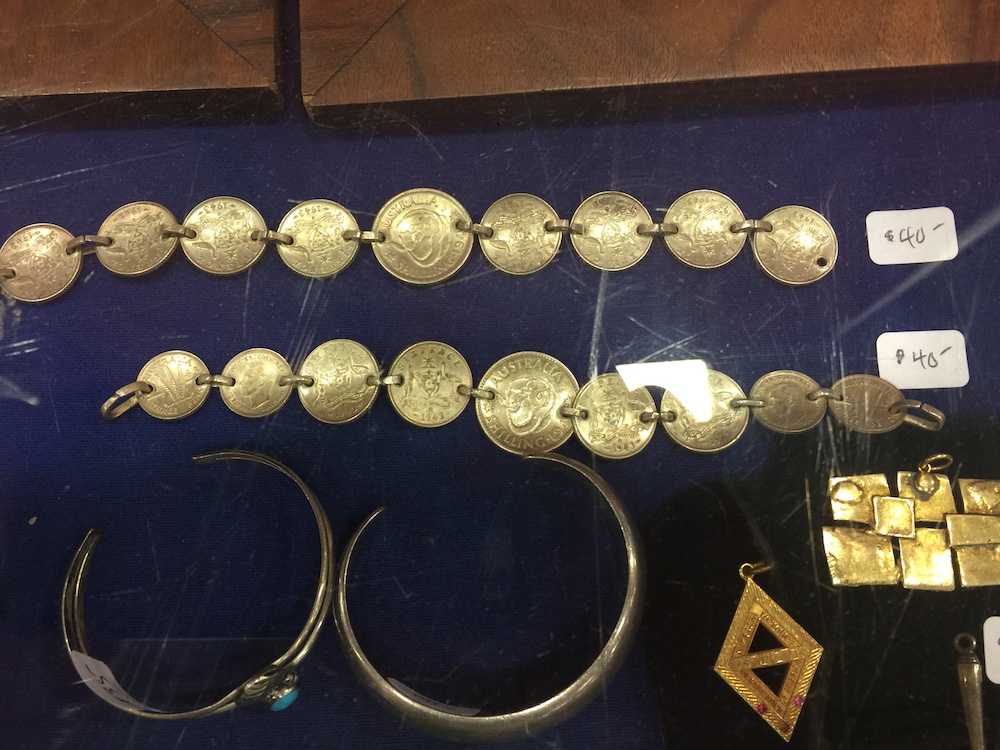
-
Bracelets are made from Australian pre-decimalisation coins that have been gold plated
-
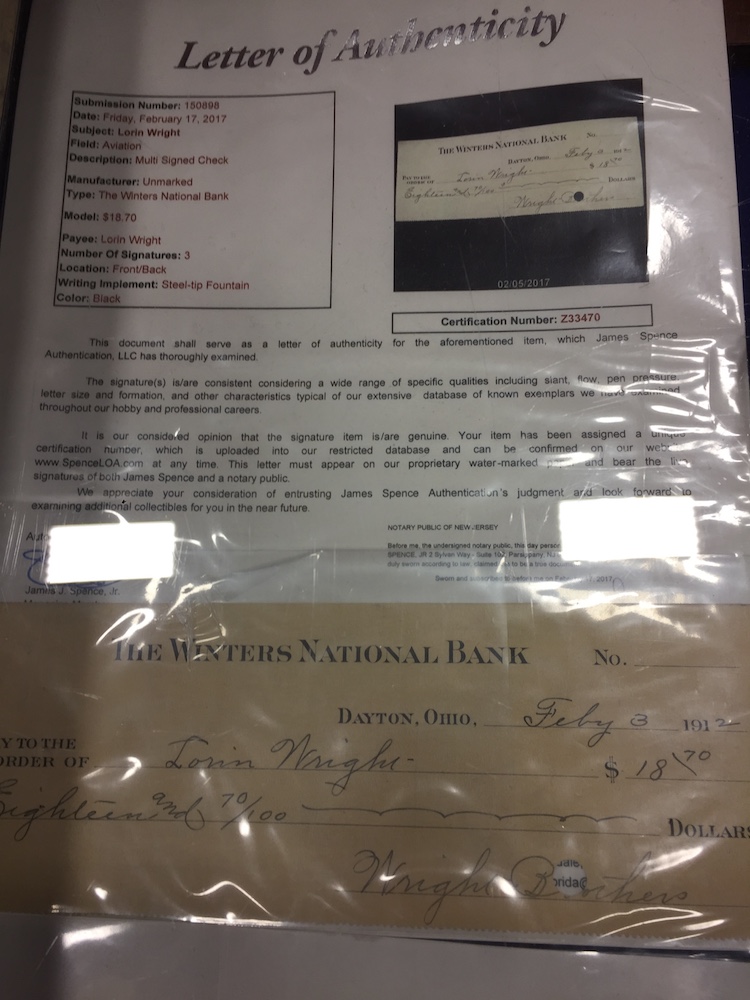
-
Check written to Lorin Wright from her brothers. Lorin Wright endorsed the check on the reverse.
-
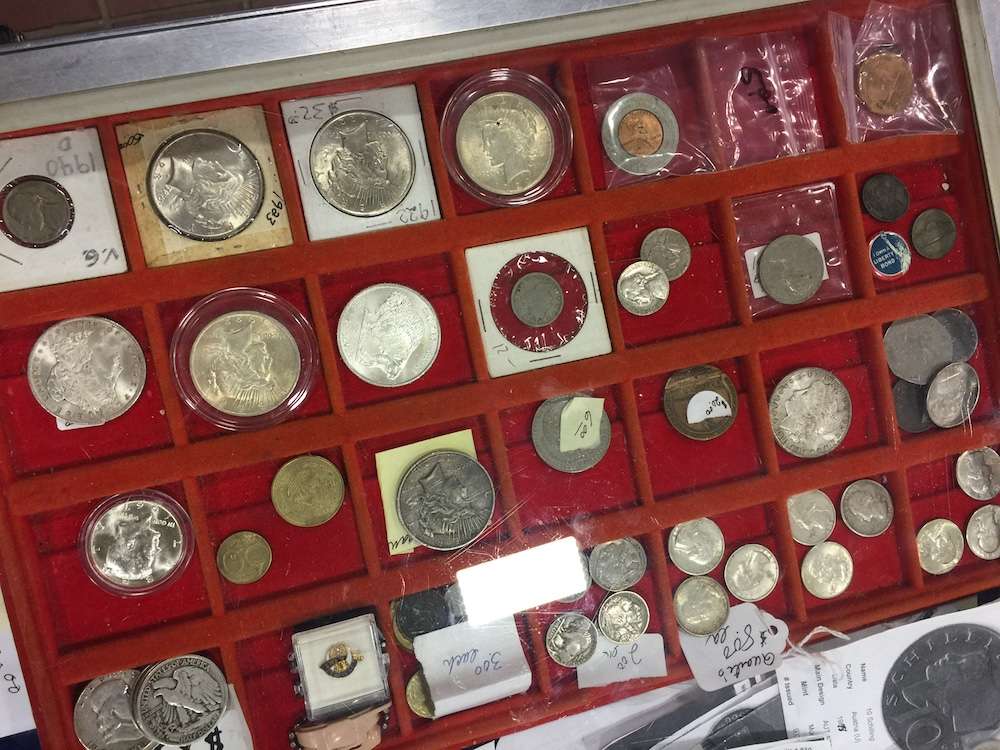
-
Tray of miscellaneous coins.
Apr 30, 2017 | BEP, currency, news
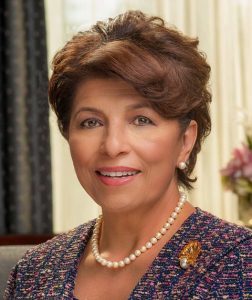
Jovita Carranza
The following biographical note was released by the White House:
Ms. Carranza currently is the Founder of JCR Group which provides services to companies and non-governmental organizations. She previously served as Deputy Administrator of the U.S. Small Business Administration (SBA) under President George W. Bush, after receiving unanimous confirmation. Prior to her service in SBA, Carranza had a distinguished career at United Parcel Service where she started as a part-time, night-shift box handler and worked her way up to be the highest ranking Latina in company history where she served as president of Latin America and Caribbean operations. Ms. Carranza earned her MBA from the University of Miami in Florida. She also has received executive, management and financial training at the INSEAD Business School in Paris, France; Michigan State University; and the University of Chicago.
When confirmed Carranza will be the 44th Treasurer of the United States succeeding Rosie Rios who resigned on July 8, 2016.
Since the Series 2017 notes will carry Carranza and Secretary of the Treasury Steven T. Mnuchin’s signature, here is a view of what you might expect:
Rather ordinary considering the fun we had discussion Jack Lew’s Lewpts!
Apr 25, 2017 | coins, commentary, nclt

1884 & 1881 Morgan Dollars that were estate finds
The 1884 dollar was in good (G-4) condition with a rim ding while the 1881 coin could pass for an extra fine (XF). When the person behind the cases said that she would sell the coins for $20 each, I added them to growing list of items I was buying. JJ was jealous.
JJ considers himself a hoarder and collector. He likes to find Morgan dollars and hoards them. During our conversation, he said that he hoards all pre-1965 coins regardless of type and condition. As a result, we ended up discussing collecting “modern” versus “classic” coins.
JJ and I are about the same age. We grew up with clad coinage but continued to find silver coins in pocket change until the early 1970s. We filled blue folders from the pocket change we were able to find in our father’s pockets and we have our respective first folders of Lincoln cents. Even though the modern era has been going on for 53 years, there are a lot of people like JJ who gives these coins little to no respect.
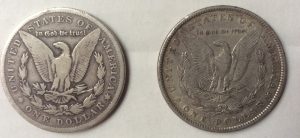
Reverse of the 1884 & 1881 Morgan Dollars estate finds
During the first few years of the blog, I had provided extensive coverage and review of the State Quarters series. At the time, it was a novel idea that involved everyone as the states held competitions to decide how they will be represented forever. Some designs were really special and showed off the historical importance of their state. Others had great designs. Then there were those that were so ugly one could be excused if they were removed from their collections. The problem is that the state quarters were not rare (Philadelphia produced over 1 billion Virginia quarters in 1999) and the hucksters inflated their future value, especially on the television shopping networks turning people off to the hobby.
I have not said much about the America the Beautiful Quarter series. There seems to be a lack of interest in a lot of places. Collectors have shown a fatigue in yet another series and the public has not been involved with the designs as they were with the state quarters. In fact, the U.S. Mint, National Park Service and U.S. Forestry Service worked together to make the decision as to what National Parks or National Forests to feature without involving the public.
Of course, when you do not involve the public you get the infighting between the Citizens Coinage Advisory Committee and U.S. Commission of Fine Arts regarding the design. We see the dance between the two as just annoying while the public sees more government bureaucracy causing problems.
It is possible that the dealers have been talking down modern United States coinage because of their business concerns. However, there are companies that are now making a good living fulfilling the needs of collectors putting together sets and selling non-circulating legal tender (NCLT) coins. While I think some of the coins are gimmicks, these companies are doing well selling the colored and other coins from the Royal Canadian Mint, Royal Australian Mint, and the countries that have had the New Zealand Mint produce their coins.
Just because I do not like those coins does not diminish their value as numismatic collectibles. Even though I will not collect many of these coins, there is nothing wrong with those who do. Maybe if the hobby stops disparaging modern and these alternative types of NCLT coinage it will inspire more collectors to use them as a gateway into the hobby. It would not hurt to try!
NOTE: I previewed this topic as part of the Numismatic World Newsletter that is sent to subscribers Sunday evening. The newsletter includes news about coins, currency, and precious metals from the regular media around the world and not the numismatic press. When I am not previewing what is on my mind, I write exclusive content newsletter readers. To receive the newsletter,
subscribe here.
Apr 24, 2017 | coins, commentary, poll
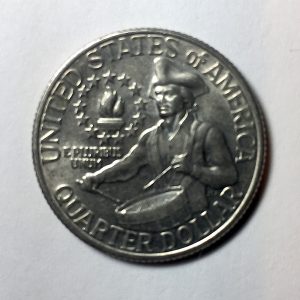
1976 Washington Quarter with my favorite, the Drummer Boy reverse
The modern era of United States coins begins in 1965 when silver was removed from circulating coins except for the Kennedy half-dollar. The silver content of the half-dollar was reduced to 40-percent and clad around a copper core while the dime and quarter were copper-nickel clad, as they are today. It would not be until 1982 when the cent was changed from being 95-percent copper to being copper-plated zinc coins. The nickel has used the same copper-nickel composition since the release of the 1883 Liberty Head nickel except for the World War II issues.
For the average collector under 40 years old, coins have always been copper-nickel clad and the cent has always been made from copper-plated zinc. For a significant amount of their lives, the reverse of the Lincoln cent always had the Lincoln Memorial and the reverses of the quarter have been changing ever since they can remember. While many of us grew up with single designs, those of us who were around for the Bicentennial will remember the special reverses produced for the quarters, half-dollars, and dollar coins. In fact, the Drummer Boy reverse of the dual-dated 1776-1976 quarters remains my all-time favorite circulating commemorative reverse.
Maybe it is time to give modern coins more respect. What do you think?

Loading ...
Apr 19, 2017 | coins, commentary, gold, legal, news, US Mint
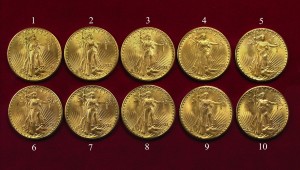
The ten 1933 Saint-Gaudens Double Eagles confiscated by the government from Joan Lanbord, daughter of Israel Switt.
Shortly after the sale of the Farouk-Fenton 1933 Saint-Gaudens Double Eagle coin, currently the example that is legal to own, in 2002 for $7.59 million at auction ($10.23 million accounting for inflation), Joan Langbord, daughter of Israel Switt, was searching through her late father’s boxes and found ten of these coins. Langbord then sent the coins to the U.S. Mint to authenticate. After a period of time, the Langbords inquired about the coins. They were told the coins were genuine and would not return them, calling them stolen items.
Langbord and her son Roy Langbord hired Barry Berke to help retrieve the coins. Berke was the attorney for British coin dealer Stephen Fenton who was arrested by the U.S. Secret Service when trying to buy the coin at the famous Waldorf-Astoria Hotel in New York in 1996. Berke negotiated Fenton’s release from prison and the subsequent sale at the July 2002 auction.
After the U.S. Mint refused to return the coins, the Langbords sued the government in 2006. The case went to trial in 2011 with a jury verdict against the Langbords. After the ruling, Assistant U.S. Attorney Jacqueline Romero, the government’s lead attorney in the case, came out with a courthouse statement, “People of the United States of America have been vindicated.” Do you feel vindicated?
The case was appealed to the U.S. Court of Appeals for the Third Circuit in Philadelphia.
In a hearing in 2015, Judge Marjorie O. Rendell ruled that the government was too aggressive in its actions and that the lower court judge erred in evidence handling. A subsequent three-judge panel upheld Judge Rendell’s ruling and ordered the government to return the coins.
The government appealed the ruling and asked for a full-circuit hearing. Called a ruling en banc, in 2016, a full panel of 12 judges ruled 9-3 that they agreed the lower court made mistakes in the presentation of evidence but they did not feel that there was not enough evidence that could overturn the ruling. The Appellate Court overturned the appeals and reinstated the original verdict.
Berke, on behalf of the Langbords, asked the Supreme Court to review the ruling of the Third Circuit. Officially, it is called a petition for a writ of certiorari. The petition was filed on October 28, 2016.
On April 17, the petition was denied. Justice Neil Gorsuch did not take part in the decision since he was not on the bench at the time the petition was filed.
Attempts to contact Burke have not been successful.
The inconsistency of how the government has handled the many different cases of coins that were not supposed to be in public hands is infuriating. Although the government has a history of confiscating the 1933 Double Eagles, the 1913 Liberty Head Nickels remain out of government control while the 1974-D Aluminum Cent was confiscated, while the 1974 Aluminum Cent pattern that was allegedly given to janitor by a member of congress was allowed to be sold at auction.
Patterns were never supposed to leave the U.S. Mint yet after the William Woodin served as Franklin Roosevelt’s first Secretary of the Treasury, the government has not tried to confiscate patterns. Woodin was a collector of patterns and trial coins who also had Roosevelt exempt “rare and unusual coin types” when writing the order to withdraw gold from private hands.
Even if the Third Circuit agreed that the evidence was not handled properly by the lower-court judge under the terms of the law, how can they tell whether a retrial would yield a different outcome? Why not return the case and retry the case?
While I love reading a good conspiracy theory, I find many difficult to understand how all of the moving parts can work in unison for or against anything. However, there are aspects of this story where a good conspiracy theorist could spin quite a tale.
Saying, “there ought to be a law” is usually not the real answer to many problems. However, maybe it is time to reconsider that feeling to force the government to act consistently. Considering how congress has turned dysfunction into fine art, I do not see this ever happening.
Do you still feel vindicated?
Apr 17, 2017 | coins, education, foreign, US Mint
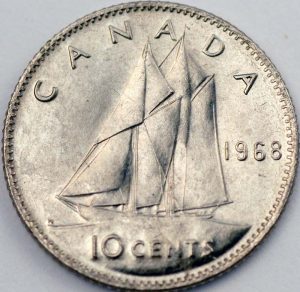
1968 Canada 10-cents coin struck by the U.S. Mint
After adding the coins struck for Iceland as part of the 2000 Leif Ericsson commemorative program and the coins struck at the Manila Mint, it appears that the Mints of the United States have produced over 10.75 billion coins and sold nearly 650 million planchets to foreign countries. That is over 11.4 billion pieces produced by the U.S. Mint from 1875 through 2000 that were not intended to circulate in the United States.
The following table shows the number of coins produced for each country:
| Country |
Number of pieces produced |
Country |
Number of pieces produced |
| Argentina (Blanks)1 |
64,058,334 |
Hawaii2 |
1,950,000 |
| Australia |
168,000,000 |
Honduras |
115,929,500 |
| Belgian Congo |
25,000,000 |
Iceland |
143,324 |
| Belgium |
25,000,000 |
Indo-China |
135,270,000 |
| Bolivia |
30,000,000 |
Israel |
91,000
|
| Brazil (Blanks)1 |
406,249,266 |
Korea |
295,000,000 |
| Canada |
85,170,000 |
Liberia |
56,744,679 |
| China |
39,720,096 |
Mexico |
91,076,840 |
| China, Republic Of (Taiwan) |
428,172,000 |
Mexico (Blanks)1 |
175,714,411 |
| Colombia |
133,461,872 |
Nepal |
195,608 |
| Costa Rica |
131,798,820 |
Netherlands |
562,500,000 |
| Cuba |
496,559,888 |
Netherlands East Indies |
1,716,368,000 |
| Curacao |
12,000,000 |
Nicaragua |
26,080,000 |
| Dominican Republic |
76,954,297 |
Panama (Republic) |
193,838,428 |
| Ecuador |
214,451,060 |
Peru |
761,067,479 |
| El Salvador |
226,695,351 |
Philippines3 |
3,690,543,252 |
| Ethiopia |
375,433,730 |
Poland |
6,000,000 |
| Fiji |
4,800,000 |
Saudi Arabia |
124,712,574 |
| France |
50,000,000 |
Siam (Thailand) |
20,000,000 |
| Greenland |
100,000 |
Surianam (Netherlands Guiana) |
21,195,000 |
| Guatemala |
7,835,000 |
Syria |
7,350,000 |
| Haiti |
90,324,000 |
Venezuela |
306,762,944 |
|
|
Blanks (planchets)
Coins
TOTAL |
646,022,011
10,754,294,742
11,400,316,753 |
Notes
1 Listings marked “(Blanks)” were those countries who purchased blanks and not struck coins.
2 Coins produced prior to Hawaii becoming a state.
3 Includes coins struck at Manila Mint.
I expected to see the number of coins struck for the Philippines to be very high. What surprised me were the volume of coins struck for the Dutch East Indies. Combine that number with the total for the Netherlands, the U.S. Mint has struck over 2 billion coins for them.
Some of the countries on the list are interesting like striking coins for Cuba until 1960, two years into Fidel Castro’s reign. France was also a surprise until I looked at the data and noticed that the coins were struck in 1944, post World War II. In 1968 and 1969, the Philadelphia Mint struck over 85 million 10 cent coins for Canada. This must have been a capacity issue by the Royal Canadian Mint which I will investigate at another time.
NOTE: For the non-technical among the readers, data normalization the process of organizing the data and making it consistent for use in a database. It makes programming easier when all of the data is consistent. Unfortunately, the data on foreign coin production from the U.S. Mint is formatted so that it can easily be printed. I am trying to fix that.
Credits
- Image of the U.S. Mint struck Canadian 10-cent coins courtesy of Canadian Numismatist Daniel W. Gosling. See this page for more information on the 1968-69 Canadian 10-cent coins.
Apr 16, 2017 | coins, education, foreign, US Mint

When looking for reference materials, there is nothing better than finding the authoritative source
Finding most of the information was easy. After searching a number of online archives and digitized publications, especially the Newman Numismatic Portal hosted at Washington University in St. Louis, most of what I was looking for was printed in the publication Domestic and Foreign Coins Manufactured by the Mints of the United States.
Although I have a printed copy, it would be easier if someone else digitized the book. After poking around a few archives, I found a digital copy and downloaded the entire image as a PDF. Although other formats were available, the PDF image was the most complete and the only one that my optical character recognition (OCR) program was successful in converting the printed page to something a computer can understand.
These printed tables have been updated ever since the Bureau of the Mint began to publish this compilation, which appears to begin around 1905. Prior, bits and pieces have been added to the Director’s report which was submitted to congress as part of a larger report by the Department of the Treasury. The problem is that the tables were created in a matter that would be easier to typeset using the technology of the time. It is not optimal for the person that wants to digitize the information.
I will spare the details, but it took more than two weeks of part-time work to extract the data and format it in a way that made sense for a computer. Even though I felt that it might have been faster to manually transcribe the data, the work will benefit future projects.
Not coincidentally, the last time the Mint published this book was in 1980, the last year they stopped striking accepting orders to strike coins for foreign countries.
The first coins struck by the Mint for a foreign government was the 1876 one centavo and 2½ centavo coins for Venezuela. In 1875, the Mint in Philadelphia struck 8 million of the one centavo and 1.5 million 2½ centavos coins for Venezuela. The composition is reported as being an alloy of copper, nickel, and zinc but there is no record of the ratio.
-

-
Venezuela 1876 Centavo (obverse)
-
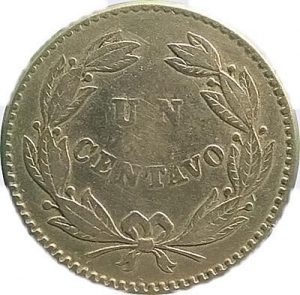
-
Venezuela 1876 Centavo (reverse)
-

-
Venezuela 1876 2½ Centavos (obverse)
-
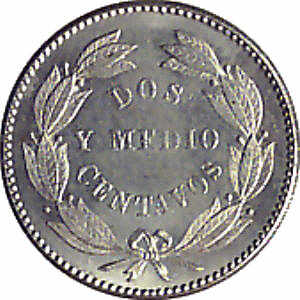
-
Venezuela 1876 2½ Centavos (reverse)
Apparently, it was common for the Mint to strike coins for foreign countries with the following year’s date. In one document, it explained that these coins were struck at the end of the year following the completion of the minting of United States coins. Since coin production and transportation was a bit slower than it is today, it allowed foreign governments to plan for their following year’s demand.
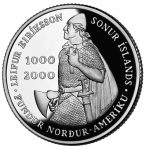
2000 Leif Ericson Icelandic Krónur Commemorative Silver Proof (Obverse)
One thing that none of these tables include are the coins struck at the Manila Mint. To help relieve the burden of making coins for the Philippines after they became a colony of the United States, the Mint was allowed to establish a branch mint in Manila. It is the only branch mint outside of the continental United States. The mint opened in 1920 and produced coins in one, five, ten, twenty, and fifty-centavo denominations. Coins struck by this mint bear either the “M” mintmark or no mintmark. The mint was closed in 1941 because of the outbreak of war.
Official records from the Manila Mint are difficult to find because they were not included in the regular Treasury reports. Using a combination of the colonial government reports to congress, which required a trip to the Library of Congress, and the Standard Catalog of World Coins, I was able to compile the data of coins produced in Manila.
Although the list is being edited for consistency in formatting (I like things accurate and pretty), the following is a summary of the coinage produced by the Manila Mint from 1920 through 1941:
| Denomination |
Composition |
Diameter (mm) |
Weight (g) |
Mintage |
| 1 Centavo |
Bronze |
5.30 |
25.00 |
142,310,195 |
| 5 Centavos |
Copper-Nickel |
4.75 |
19.00 |
32,242,041 |
| 10 Centavos |
.750 Silver, .250 Copper |
2.00 |
16.70 |
16,413,038 |
| 20 Centavos |
.750 Silver, .250 Copper |
4.00 |
21.00 |
13,123,046 |
| 50 Centavos |
.750 Silver, .250 Copper |
10.00 |
27.50 |
2,736,763 |
| Total Mintage |
206,825,083 |
When the table is completed and I figure out a way to display the data in a useful form, I will upload it for everyone to reference. I know that there will be some that would disagree with adding the mintage from the Manila Mint to those located in the United States. But the Manila Mint was owned by the United States government at a time that the Philippines was a colony of the United States and was run by administrators that were part of the Mint’s reporting structure. As the editor of the data, that is enough reason for me to include it with the rest of the data of foreign coins produced by the U.S. Mint.
Credits
- Venezuelan coin images courtesy of Monedas de Venezuela.
- 2000 Leif Ericsson Krónur Proof coin image courtesy of the U.S. Mint.
Apr 13, 2017 | medals, silver, US Mint
I have delayed writing about my happenstance to attend the Whitman Baltimore Expo waiting for more information on something that was on display at the U.S. Mint booth.
I was not going to visit the Whitman Expo on April 1 because I had a meeting scheduled with a client. After the client canceled, I decided to turn the truck to downtown Baltimore toward the Convention Center. One of the reasons for going was to see the 2017 Liberty Gold coin. I thought it would be my only chance to see the coins since it is unlikely I will purchase one. When I walked to the U.S. Mint booth in Hall C, the gold coin was in a display case. What was next to it was far more intriguing.
On a spinning stand were two silver medals using the same design as the gold Liberty coin. One was a proof with a “W” mintmark on the reverse and the other a reverse proof with a “D” mintmark. The look of the medal in silver was fantastic! The eagle on the reverse really stands out on the proof whereas the calming look of the burnished finish of the reverse proof shows real artistry.
-

-
2017-W Liberty Silver Medal (Proof Obverse)
-

-
2017-W Liberty Silver Medal (Proof Obverse)
Further examination of the pictures suggests that the reverse proof may be considered enhanced uncirculated where the U.S. Mint laser treats dies to change the texture of the strike.
-

-
2017-D Liberty Silver Medal (Reverse Proof Obverse)
-

-
2017-D Liberty Silver Medal (Reverse Proof Obverse)
It appears that the medals are the same size as the silver planchets used for the American Silver Eagle coins. If they are using the same planchets, they would be 38.1 mm in diameter of one troy ounce of .999 silver.
The U.S. Mint did not announce the production of silver Liberty medals. U.S. Mint personnel attending the booth were not able to provide additional information. Email inquiries have not yet been answered.
NOTE: Readers of the “
Numismatic World Newsletter” were provided a preview of the medals. The newsletter consists of numismatic-related news from non-numismatic sources and a brief article that will not be posted here. Sometimes, I will send items to subscribers before appearing on the blog.
Click here to subscribe!
Apr 10, 2017 | books, coins, news
 Whitman Publishing debuted the 71st edition of A Guide Book of United States Coins at the Whitman Expo on March 31, 2017. Early orders have been taken and some retailers are still waiting for their orders to arrive. For the hobby, waiting for the new Red Books is an annual rite of passage, even though some do not buy the book.
Whitman Publishing debuted the 71st edition of A Guide Book of United States Coins at the Whitman Expo on March 31, 2017. Early orders have been taken and some retailers are still waiting for their orders to arrive. For the hobby, waiting for the new Red Books is an annual rite of passage, even though some do not buy the book.
Over the years, the Red Book has been updated to include more color, better images, and more information. With the work of Q. David Bowers and the Whitman staff filling out the library of books about every coin type, mint and proof sets, and even a Red Book for the Red Book, there is an incentive to increase the purchase pattern.
Then there’s MEGA RED, the phonebook-sized version that includes more information, in-depth analysis of some coins, and more items including significant tokens and major errors. For those not old enough to remember the phonebook, a relic caused by the Internet, if you lived in a densely-populated area, the 1500-page MEGA RED book is about as thick as the telephone book used to be in those areas.
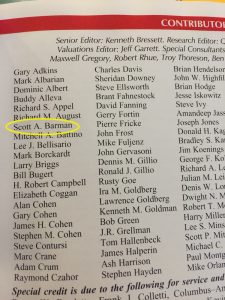
Contributors page from the 71st Edition of the Red Book
Modern coins are those classified as being struck after 1964 when silver was removed from most U.S. coins. These are the coins that some dealers do not show a lot of love for because they are not perceived as worth the effort to sell. Although some of that has changed since the State Quarters were first introduced in 1999, the hobby should show more respect to these coins especially since we are 53 years into the modern era.
Although many feel that the Red Book pricing is obsolete when it comes out, it is still a good guide to understanding the foundation of pricing even if there is are market fluctuations. Thus, it would not hurt to get these prices closer to being correct, especially for the upcoming collectors. After all, this is a “guide,” not a price list.
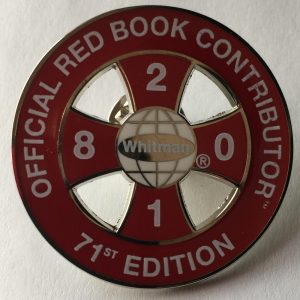
Lapel pin given to Red Book contributors
Using modern terms, the coin prices reported by the Red Book is the result of crowdsourcing. Volunteers enter prices and the editors make the final determination from the input provides. It is not a perfect system but it works in an area where coin pricing is more of an art and not a science. Although I did not check to see how my recommended updates affected the prices in this edition of the Red Book. I just hope it helps.
Apr 6, 2017 | coins, commemorative, legislative
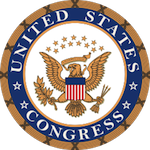 If you think congress is dysfunctional based on what you see on the television news, try working behind the scenes. Recently, I met someone who started working for the government in 1972, before the explosion of the Watergate scandal. With the environment being so toxic, he decided to join the march of government employees into retirement. Very senior government employees with significant institutional knowledge are leaving the government in droves. This is not going to turn out well for the people these agencies are supposed to serve.
If you think congress is dysfunctional based on what you see on the television news, try working behind the scenes. Recently, I met someone who started working for the government in 1972, before the explosion of the Watergate scandal. With the environment being so toxic, he decided to join the march of government employees into retirement. Very senior government employees with significant institutional knowledge are leaving the government in droves. This is not going to turn out well for the people these agencies are supposed to serve.
In the mean time, here is the legislative review for bills that will probably languish in committee for the forseeable future.
H.R. 1582: Duty First Act
Sponsor: Rep. Steve Russell (R-OK)
• Introduced: March 16, 2017
• Summary: To require the Secretary of Treasury to mint coins in commemoration of the 100 year anniversary of the 1st Infantry Division.
• Last Action: Referred to the House Committee on Financial Services: March 16, 2017
Track this bill at http://bit.ly/115-HR1582
H.R. 1683: National Purple Heart Hall of Honor Commemorative Coin Act
Sponsor: Rep. Sean Maloney (D-NY)
• Introduced: March 22, 2017
• Summary: To require the Secretary of the Treasury to mint coins in commemoration of the National Purple Heart Hall of Honor.
• Last Action: Referred to the House Committee on Financial Services: March 22, 2017
Tack this bill at http://bit.ly/115-HR1683
S. 759: Currency Optimization, Innovation, and National Savings Act of 2017
• Sponsor: Sen. John McCain (R-AZ)
• Introduced: March 29, 2017
• Summary: To save taxpayers money by improving the manufacturing and distribution of coins and notes.
• Last action: Read twice and referred to the Committee on Banking, Housing, and Urban Affairs March 29, 2017
Track this bill at http://bit.ly/115-S759



































 If you think congress is dysfunctional based on what you see on the television news, try working behind the scenes. Recently, I met someone who started working for the government in 1972, before the explosion of the Watergate scandal. With the environment being so toxic, he decided to join the march of government employees into retirement. Very senior government employees with significant institutional knowledge are leaving the government in droves. This is not going to turn out well for the people these agencies are supposed to serve.
If you think congress is dysfunctional based on what you see on the television news, try working behind the scenes. Recently, I met someone who started working for the government in 1972, before the explosion of the Watergate scandal. With the environment being so toxic, he decided to join the march of government employees into retirement. Very senior government employees with significant institutional knowledge are leaving the government in droves. This is not going to turn out well for the people these agencies are supposed to serve. 